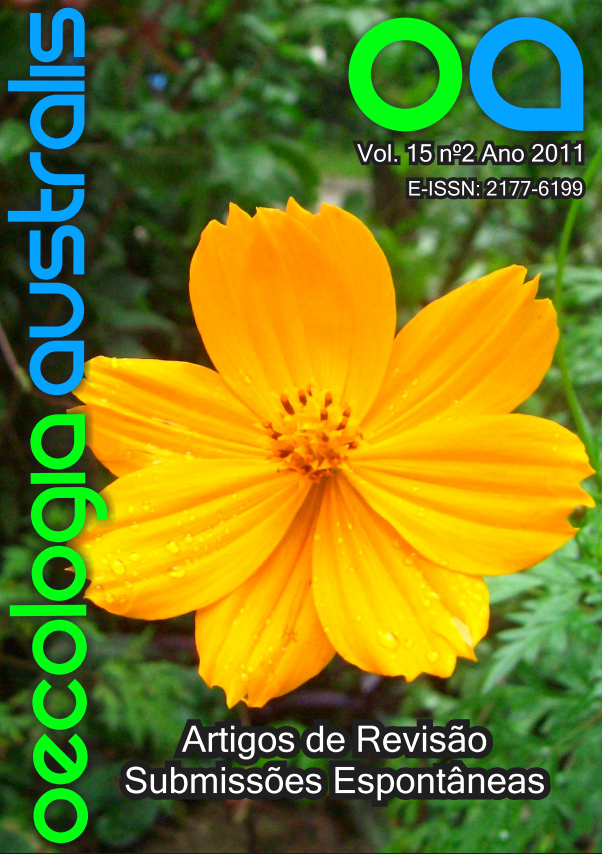FATOR DE CONDIÇÃO: BASES CONCEITUAIS, APLICAÇÕES E PERSPECTIVAS DE USO EM PESQUISAS ECOLÓGICAS COM PEIXES
Abstract
CONDITION FACTOR: CONCEPTUAL FOUNDATIONS, APPLICATIONS AND PROSPECTS FOR USE IN ECOLOGICAL RESEARCH WITH FISHES. This review aimed to detect trends in the use of condition factor from studies with different aquatic and semiaquatic organisms and present the main indexes and their uses for fish, assessing its potential application to questions involving the effect of environmental change on populations. We conducted a literature review involving the scientific articles published between 1950 and 2009, which used the condition factor. The data were evaluated in two steps. At first, more general, there was a significant increase in the number of publications, with the occurrence of 2,666 articles in 567 journals. Most studies involved the fish group, followed by molluscs, crustaceans, birds, mammals, amphibians, and reptiles. This was an expected trend, since the tool was developed initially for the first group. In the second step, restricted to 54 articles in 20 journals related to fish, it was found that the condition factor of Fulton was the most common, followed by the allometric condition factor, and the relative factor. In general, the reviewed articles met the limitations intrinsic to each type of content regarding the applicability in populations of species with different intensities of allometry between the sexes and ranges of length classes. The importance of using these indices as tools and practices available in the evaluation of population issues in different ecological scales is reflected in the wide variety of themes and approaches of the articles. These factors justify the need of improving mathematical indices, as well as standardization of the types of condition factor used in studies dealing with the same species, making easier comparisons and, consequently, their management and conservation actions.
Keywords: Fitness; energy investment; weight-length relationship; structural component; allometry.


